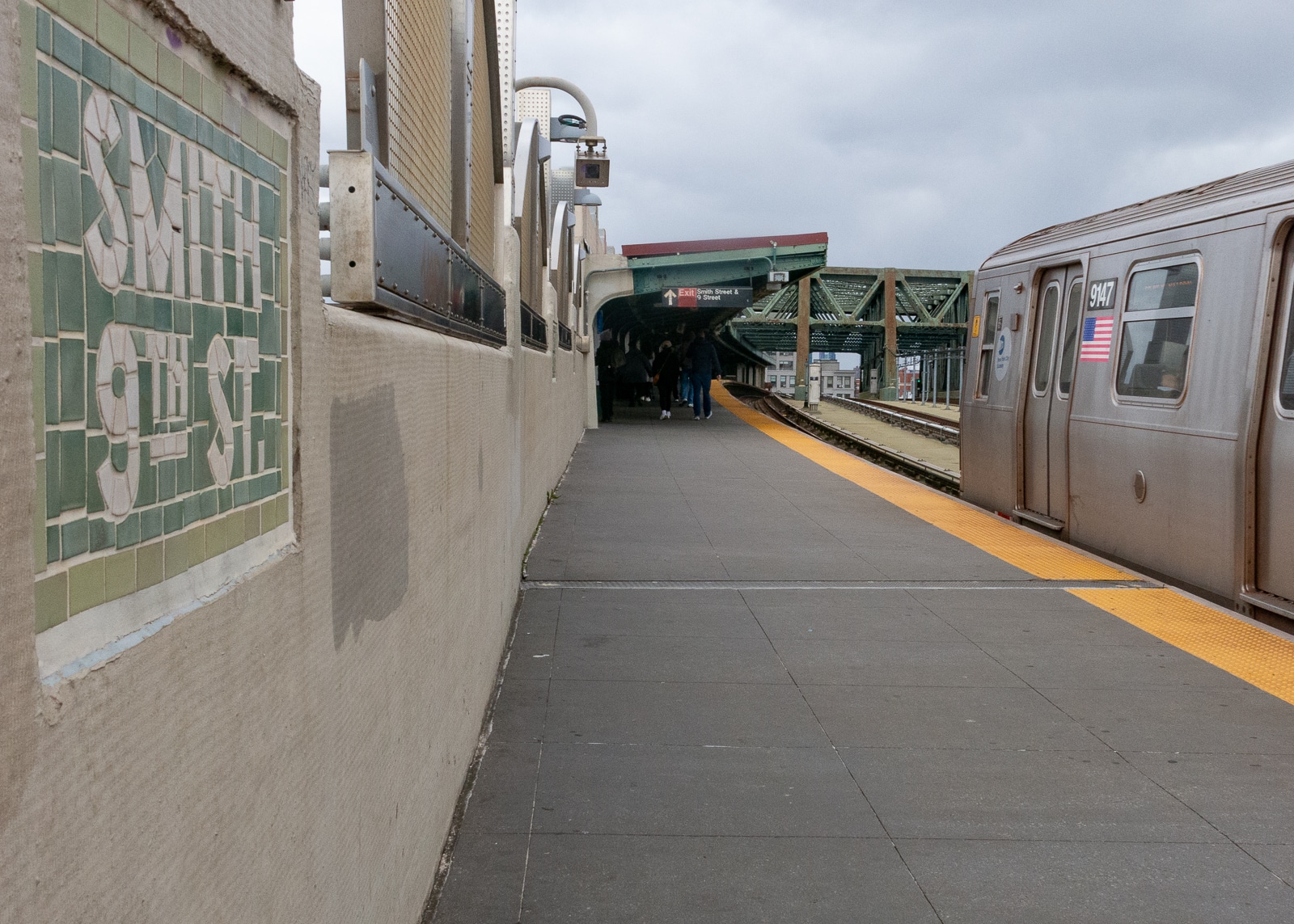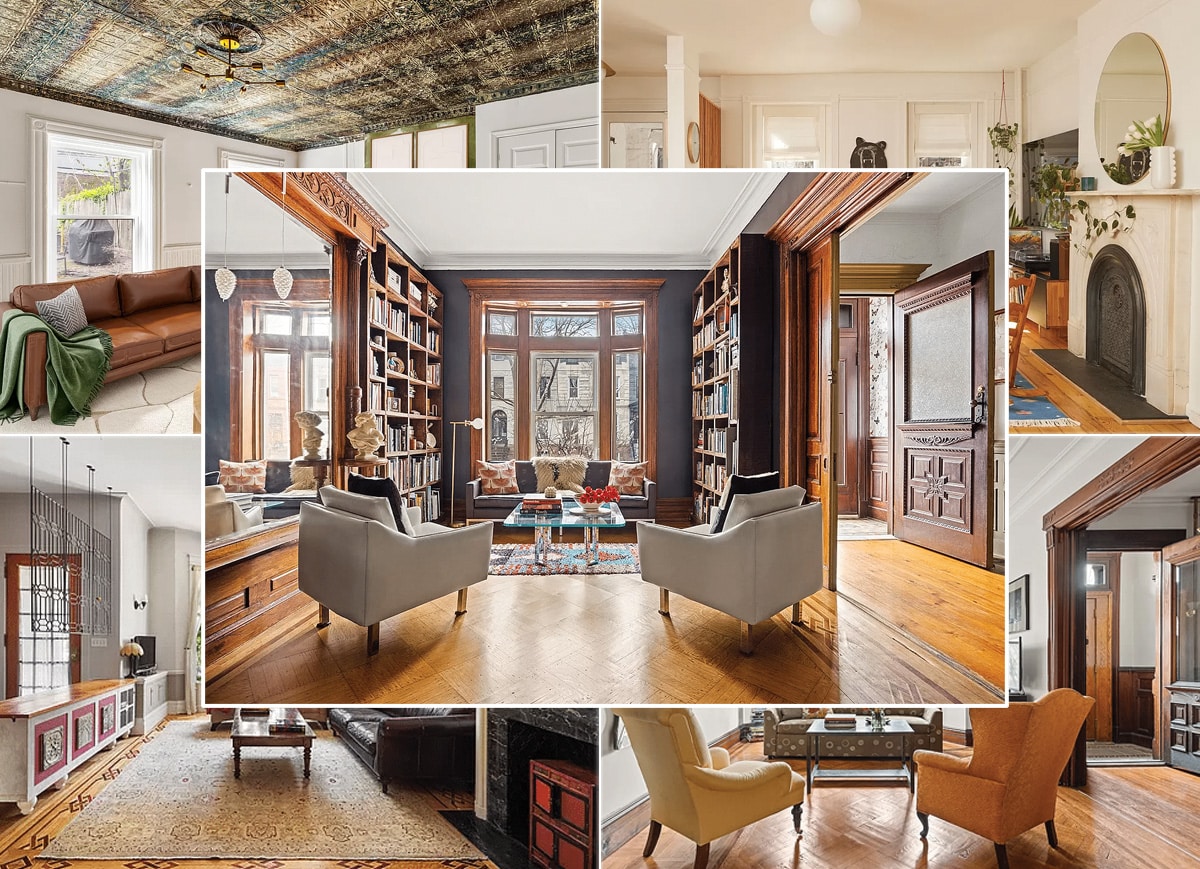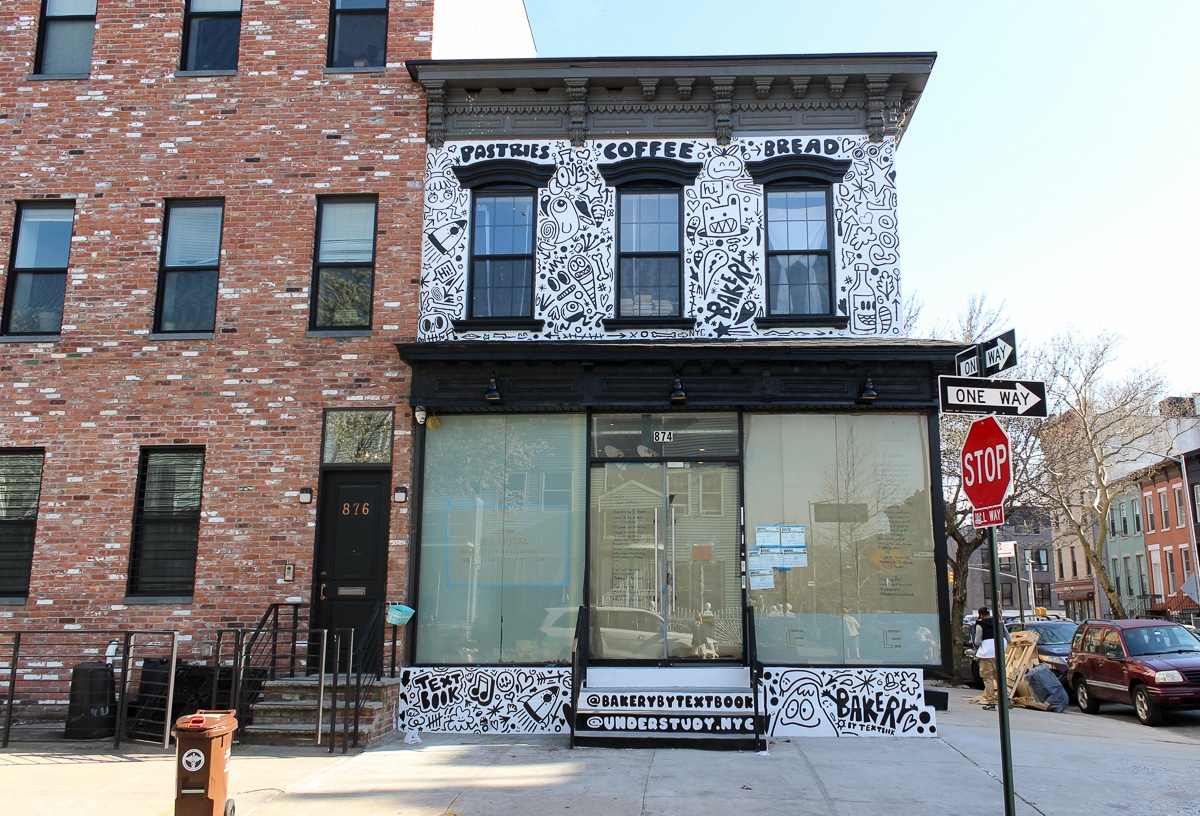Walkabout: Saving Bedford Stuyvesant, Part 3
Read Part 1, Part 2 and Part 4 of this story. The Bedford Stuyvesant Restoration Corporation was established in 1967 as the United States’ first community development corporation. The marriage of politics, federal funding, community-based action and major corporate funding was envisioned by Robert Kennedy, along with Jacob Javits, Elsie Richardson, Franklin Thomas, John Doar,…


Read Part 1, Part 2 and Part 4 of this story.
The Bedford Stuyvesant Restoration Corporation was established in 1967 as the United States’ first community development corporation. The marriage of politics, federal funding, community-based action and major corporate funding was envisioned by Robert Kennedy, along with Jacob Javits, Elsie Richardson, Franklin Thomas, John Doar, and a host of other leaders and activists, as the only way to raise forgotten inner-city communities like Bedford Stuyvesant up, and out of the cycle of poverty that seemed to have overtaken it.
The 1960s were a wakeup call to the nation in many different ways. The Civil Rights Movement had called national attention to the Jim Crow laws of the South, and to segregation and discrimination there, and a nation was moved to change.
But while Northerners volunteered to go down South to aid in voting rights, it took riots and unrest here in our northern cities for people to realize that we had our own form of segregation and apartheid right here.
We had redlining, job and housing discrimination, and neighborhoods lacking in public and private services. We had an out of control heroin epidemic, poor schools, an aging housing stock, crime and massive unemployment. There was plenty of work to be done here in New York City.
The plan was brilliant in its simplicity. As Robert Kennedy would announce in 1967, The program for the development of Bedford Stuyvesant will combine the best of community action with the best of the private enterprise system. Neither by itself is enough, but in their combination lies our hope for the future.
The visible arm of the program would be the Bedford Stuyvesant Restoration Corporation (BSRC). It would be a non-profit run by community people, and would be able to have the pulse of the community, setting the agenda for necessary programs, and deciding what projects would best serve the community. Its first president was Franklin A. Thomas. Behind the scenes would be the Development and Services Corporation (D&S), based in Manhattan, composed of business, banking and professional leaders, which would advise and fundraise private funding for the BSRC’s projects. Its first president was John Doar.
Initial government funds, along with private monies would be placed in these corporations’ hands to rebuilt and restart Bedford Stuyvesant.
The first project was centered around the abandoned Sheffield Milk Bottling Plant, on Fulton Street, which would be transformed into BSRC’s offices, and a community center in 1967. The next projects concerned housing. Also in 1967, the BSRC began a program of exterior restoration to residents of Bed Stuy.
Administered through block associations only, this program employed hundreds of local residents to work with contractors to repair facades, restore stoops, fix and replace railings and fences and redo sidewalks. Blocks that did not have block associations were encouraged to form them, and apply for this program, thereby incentivizing neighbors to organize and revitalize the community, block by block.
For $25, a qualified resident could have as much work done as was needed. The program lasted for 10 years, and thousands of homes had repair work done. A look down many Bed Stuy blocks today can attest to the effectiveness of this program. Many of the block associations started because of this program are still going strong today.
In addition to aiding present homeowners, the BSRC administered a $73 million mortgage assistance program to encourage African-American homeownership. Bedford Stuyvesant already had a higher percentage of resident homeowners than Harlem, 15 percent compared to 2 percent, in a much larger neighborhood.
That is why so much of Bed Stuy remained intact throughout these lean years, and the program allowed many more qualified people to get mortgages, valuable beyond belief in a neighborhood that was still redlined by all of the commercial banks.
The BSRC also bought many properties in the area, again using local workers to rehab apartment buildings and rowhouses into affordable housing, and later in the program, building new units of affordable housing in Bedford Stuyvesant. The BSRC managed those buildings, recycling the funds into maintenance and more housing. BSRC Job training programs offered training in carpentry, clerical work, refrigerator and A/C repair in an initiative that trained more than 1200 local people.
Thomas J. Watson, chairman of IBM and a board member of the D&S, opened an IBM computer cable factory in Bed Stuy. This was what Bedford Stuyvesant needed; a real Fortune 500 company investing in the community. This was Kennedy’s dream.
It was housed in the historic Jenkins Trust and Empire Storage building on the corner of Gates and Nostrand. It employed more than 300 people, and opened in 1968, making computer cables. By 1972, the plant was producing 25 percent of IBM’s cables and 39 percent of their power units.
They had job applications in their files for more than 4,000 people, were employing more than 400, and three-quarters of their 42 plant managers were black. That year IBM won a Business Week award for developing human resources.
By 1979, the company had outgrown the Gates avenue facility, and moved to a new building on the corner of DeKalb and Nostrand avenues. This 168,000-square-foot facility allowed them to manufacture products beyond the cables and power units, and they were also charged with manufacturing display stations and switching systems for several models in their lines.
In 1993, IBM transferred ownership of the facility to Advanced Technological Solutions, a minority owned company consisting mainly of former IBM staffers, who subcontracted work from IBM, and still work out of the plant today.
In 1975, BSRC completed Restoration Plaza, the block long and wide commercial heart of Bedford Stuyvesant. The supervising architect for this project was Bedford Stuyvesant-born and raised architect Harley M. Jones.
The Sheffield Milk plant building and surrounding former factories and store buildings were now the center of commercial, business, recreational, and cultural events. The Center for Art and Culture, which had been founded in 1970, launched a large cultural program which included the Billy Holiday Theater, housed in the Sheffield plant, the restoration Dance Theater, the Skylight Gallery for art exhibitions, and a Youth Arts Academy offering local kids lessons in music, art, dance, martial arts and visual arts.
The Bedford Stuyvesant Family Heath Care Center was opened in 1976, across the street from the Plaza. The complex itself housed Bedford Stuyvesant’s first new supermarket in 30 years, a large Pathmark, as well as retail clothing stores, branch offices of three major banks, ConEd, Brooklyn Union Gas and New York Telephone, a day care center, Caribbean radio station, Post Office, Social Security office, classrooms for New Rochelle Community College, meeting rooms, a large public plaza and an ice skating rink.
Today, many of the names have changed, but the Plaza still remains the heart of Bed Stuy’s business community.
And then there were the Superblock projects, perhaps the most ambitious piece of urban and social engineering to take place under the Restoration umbrella. And, also, perhaps the most controversial.
The Superblocks were the brainchild of architect I. M. Pei, the eminent American master architect, one of the real starchitects of the 20th century. He was the favorite architect of the Kennedy family, designer of many Kennedy-related projects, including the JFK Library in Boston, and later, Robert Kennedy’s own gravesite at Arlington Cemetery.
He had a grand plan to take two Bedford Stuyvesant blocks, close them off from traffic, cut a pathway mid-block to join the two and fill the street spaces with recreational spaces. After much deliberation, and talks with community members, and looking at where this could actually work, it was decided to build the Superblocks on St. Marks Avenue and Prospect Place, between Kingston and Albany avenues.
This area is very much a part of Crown Heights North today, but in the 1960s, early ’70s, Bedford Stuyvesant’s borders stretched north-south, from Flushing Avenue to Eastern Parkway.
The website for I.M. Pei’s architectural firm, Pei Cobb Fried and Partners, still shows the Superblock sites as examples of their urban success story, and has photos and maps of the before and after. A 1969 Village Voice article portrays a very different story, in the Voice’s classic anti-establishment vein. A look at the results, now 40 years down the road, reveals the real story to be somewhere in between, neither glowing success, nor abject failure.
This important project of the Bedford Stuyvesant Restoration Corporation and its Manhattan Development and Service partner illustrates best the successes and failures of this great experiment. But that will have to wait until next time.
Read on to the fourth and final installment of this series for a look at the Superblocks and how the Bedford Stuyvesant Restoration Corporation has fared over the last 40 years. Did they succeed in pulling Bed Stuy out of the abyss? Or fail miserably? Or is there a third alternative?
Related Stories
Suzanne Spellen, aka Montrose Morris, Is Writing Brownstoner’s First Book
Saving Bedford Stuyvesant, Part 2
Saving Bedford Stuyvesant, Part 3
Email tips@brownstoner.com with further comments, questions or tips. Follow Brownstoner on Twitter and Instagram, and like us on Facebook.
[sc:mailchimp-books ]








Thanks, MM.
Crow Hill’s origin is disputed. Some say it gained the name from the crows that hung around the Brooklyn Penitentiary, which was on Union and Bedford, just across Eastern Parkway. Others say it was a reference to the striped uniforms the prisoners wore, and they looked like a murder of crows sitting on a wire when they were out on the streets in a chain gang.
Yet others say it was a derogatory name given to the area because there used to be a shanty town that had a large black population in the area. Who really knows? Probably all three had a part in the name.
BTW, I have Brooklyn Eagle articles talking about “Crown Heights” from 1910, and Crow Hill from 1908. The 1908 article states that the name Crow Hill came from the shanty town. The 1910 article talks about how this section of Bedford was developing as its own neighborhood, with it’s own identity – Crown Heights. It refers mostly to what we call Crown Hts South, and Prospect Heights, from EP to Empire Blvd. The Brooklyn Museum, etc, was considered to be in Crown Heights.
Another article in the Real Estate and Builders Guide from 1912 says basically the same thing. At that time, they had just laid out many of the streets, such as Carroll, Crown, New York Ave, Brooklyn Ave, on that side of Eastern Parkway.
Putnam, I’ll list sources at the end of the next article. One was BSRC’s website, but they were not my only source.
“Like Manhattan, Crow Hill was purchased from American Indians with the permission of Governor Francis Lovelace; however, this time, it was the Indians who swindled the colonists. In 1607 Peter Elmohar and Job and Shamese Makaquiquas, did not hold a title to the land which they
sold for one hundred guilders, three long barrel rifles, four match coats, a half tun of strong beer and two half tuns of ordinary beer. They were Canarsie or Sachem Indians from Staten Island who had merely traveled to Brooklyn to hunt.”
http://www.brooklynprep.org/index.php?option=com_content&task=view&id=161&Itemid=279
I like the name Crow Hill better than Crown Heights. Btw, were there crows on the hill? I wonder if the realtors thought it would sound fancier to add an “n” to the word Crow, and change the word Hill to Heights. Or if it was about Crown St.
Blayze;
Good luck (seriously).
I am in need of employment, as school is out for the summer.
Blayzee;
You need a hobby.
They’re just aggravating, and an attempt to rebrand neighborhoods that don’t need new names, especially when they are actually neighborhood names with history and well, they roll off the tongue better to say the least. BoCoCa thankfully never caught on and is just used more as a joke in real estate blogs and websites.
Oddly enough, Boerum Hill, Cobble Hill, and Carroll Gardens are relatively new neighborhood monikers (which of course pay homage to their neighborhoods’ histories and features) that took root in the 1950’s when the first wave of middle/upper class professionals and artists came into Brooklyn. Before that, it was more or less known as “South Brooklyn”.
Other places like DUMBO, which in attempt were to discourage gentrification with a hilarious acronym were just silly. I’d much rather call it the Warehouse District, but we’re stuck with another ridiculous name. Amusingly enough, Dumbo’s counterpart across the river, Two Bridges, is a far more pleasing name despite the area being mostly a couple of drab blocks of public housing with a handful of classic 19th century tenements.
I think the older names were at least based in some way on the history of the area. BoCoCa and Pro-Cro are infantile contractions that hardly roll trippingly off the tongue, nor give you any sort of impression of the neighborhood. I totally agree with you, Blayze.